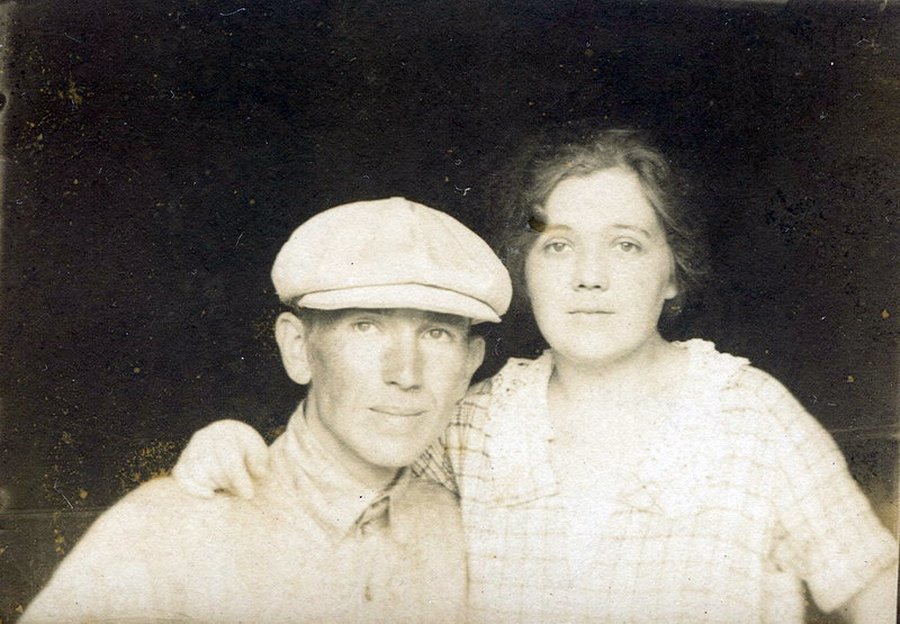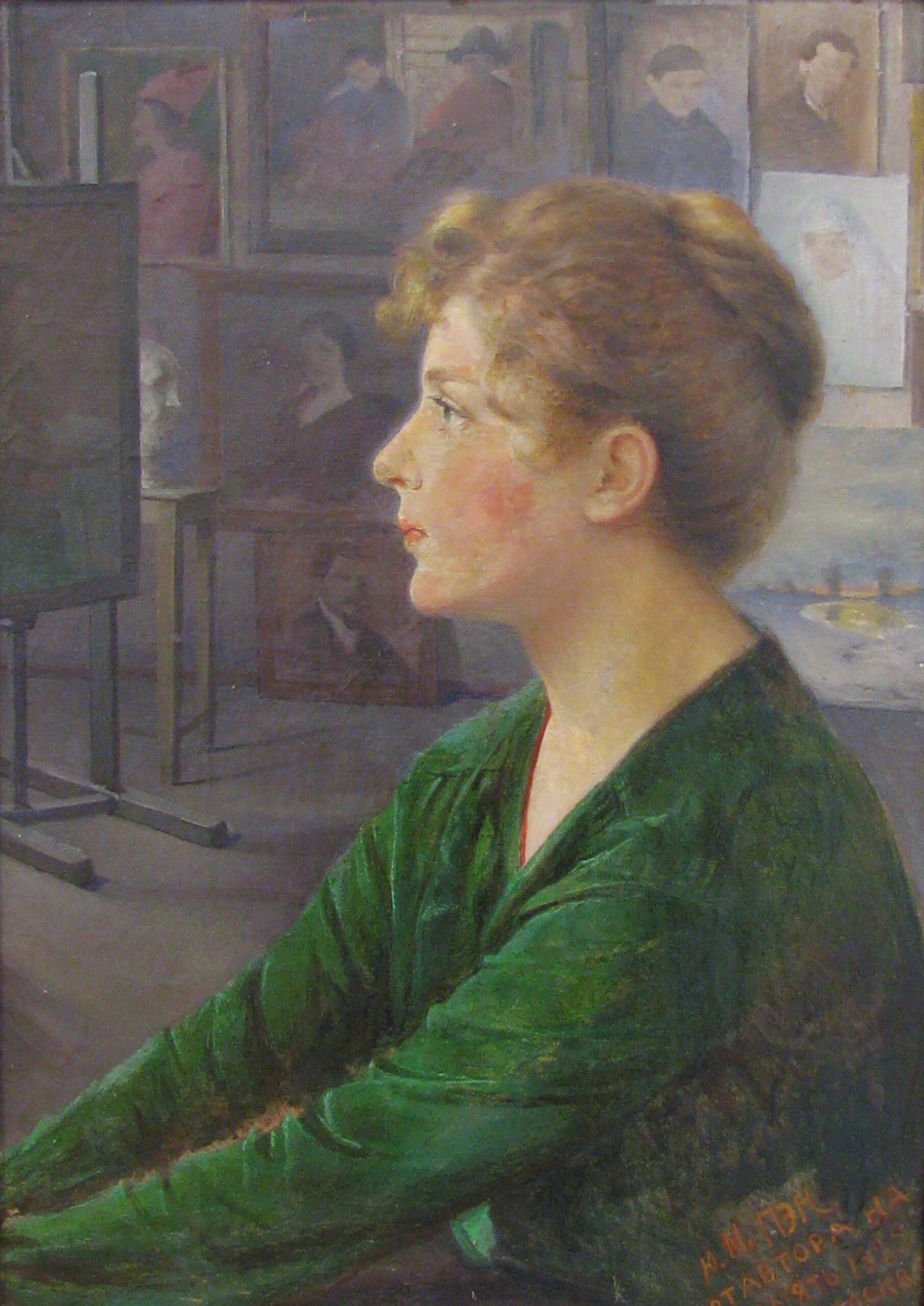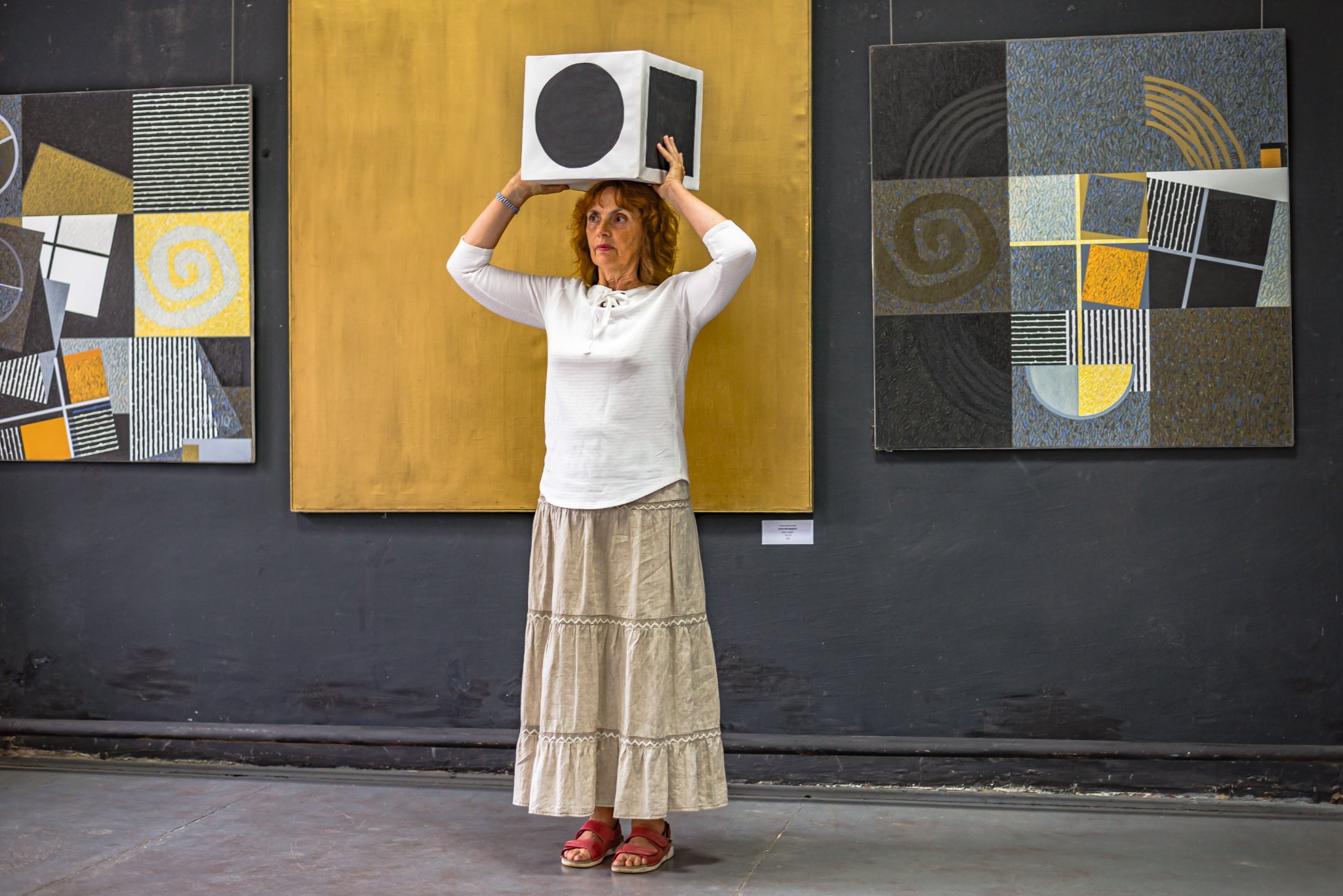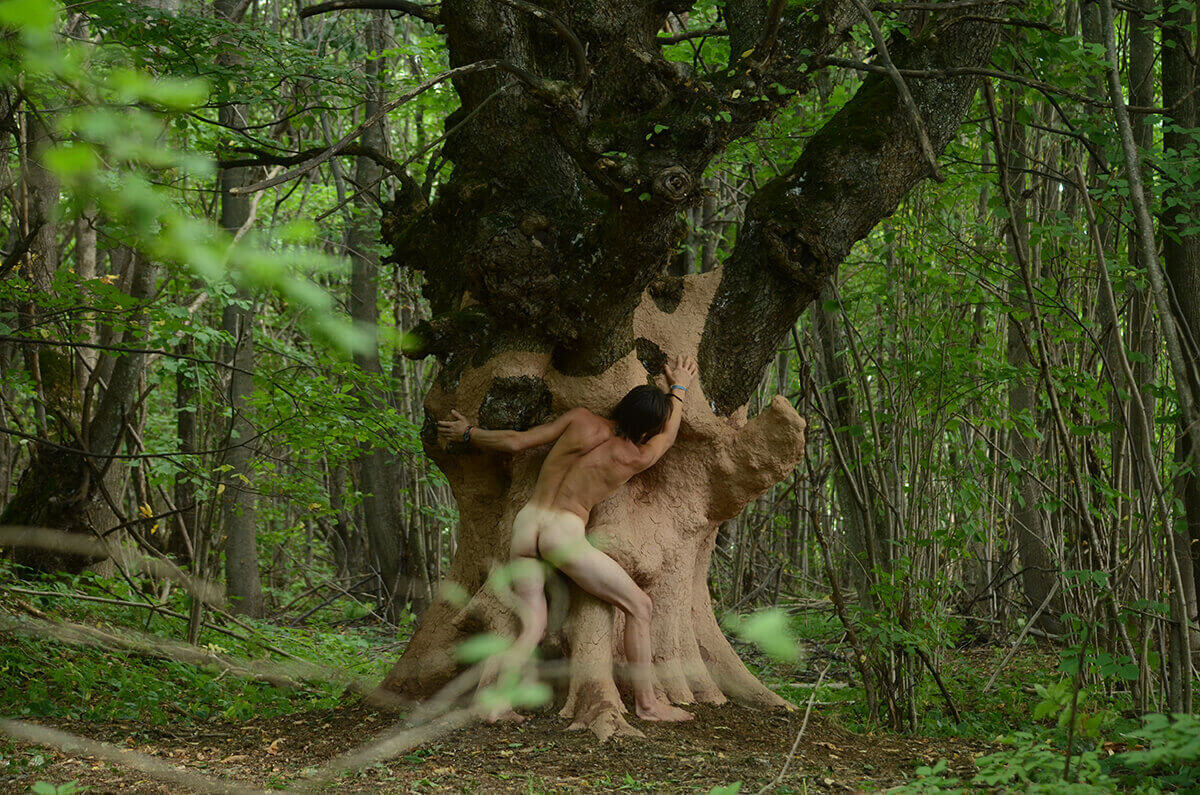Women of Belarusian art. Our past and present
Belarusian Art: from maljavanka to NFT | WOMEN OF BELARUSIAN ART | BELARUS | 14.07.2022
The topic of women's art in Belarus is not often discussed. These days we see many names of women at exhibitions, but what about the permanent ones of museums? Who are our female artists of the past and who is creating our current art history? In this text, dedicated to the project “Belarusian Art: from maljavanka to NFT” for the World week of Belarusian culture, we talk about 9 female artists of the past and present — women who are worth paying attention to, especially if you have not yet heard their names yet.
SHARE:
What is this text about?
- Why have there been no great Belarusian women artists?
- an artist and philanthropist, about whom we know very little
- an artist who helps migrants through art and activism
- a graphic artist, painter and sculptor from Viciebsk
- the successor of the Viciebsk avant-garde
- an artist who never became "soviet"
- an artist, who’s works have been published in TIME
- an artist of Polish origin, who became Belarusian after the war
- an artist whose complex installations impress others
- an artist who painted incredible animals
Why have there been no great Belarusian women artists?
The name of the introductory subchapter sounds just like the name of the famous essay “Why There Have Been No Great Women Artists” by feminist art critic and art historian Linda Nochlin and it is not accidental. After all, it is this essay that people think of the most when it comes to women's art. The question is whether the essay is fair for the Belarusian experience? There is a general tendency to sort of hush up names, but it is different everywhere, and it can be said that we took a different path from Western female artists.
If you look at the West, we can talk about the deliberate suppression of female names in art, followed by Linda Nokhlin with her essay, revealing a lot of new faces from the past and explaining why it happened. The legacy of the Soviet Union showed itself rather from the side of inattention and unwillingness to pay attention to the women of our art. Most often, a female artist was just someone's sister or wife, but not an independent unit. Women appeared as a “+1” to their brother or spouse, which, on the one hand, gave some opportunity to be a part of an artistic environment and achieve something, and, on the other hand, gave a definition only through the role of spouse, sister or daughter and put the female artist “one step” lower.
Belarusian artist Zinaida Astapovich-Bocharova with her brother Arkady Astapovich / 1920s
But let's narrow down the geography even further: what was happening in Belarus when Nokhlin's essay was being written? When Nokhlin wrote her essay, female dissident artists appeared throughout the USSR, but it wasn’t really happening on the territory of Belarus. On the other hand, our art had its own special thing: at the beginning of the 20th century we didn’t have art schools and the suppression of Belarusians made them do very logical things: most artists simply left to study in Vilnius, Warsaw, Paris, St. Petersburg, Moscow and other cities. Often they remained there, as if ceasing to be Belarusian. As a result, it is difficult to find and then correlate names with Belarus. Even the concept of “Belarusian” for many researchers of the past wasn’t very serious, even though we now treat it differently.

Photo of Belarusian artist Polina Khentova with her sculpture "Nude". The artist studied at the Vitebsk gymnasium and at the same time attended classes at Yudel Pan's studio school, where she received her primary art education. Later, she lived in Moscow for some time, where she moved with her family, and, deciding to devote herself to the fine arts, she left for Brussels to continue her education, where she studied at the Royal Academy of Fine Arts. Worked in Munich and Paris.
If the names of our female artists weren’t hushed up, then the following problem arose - women in art weren’t spoken about as independent artists. Even now, despite some sort of publicity on the topic of women and the freedom to approach it, large women's exhibitions don’t happen or happen rarely. When we go to our National art museum’s hall of Belarusian art, where the artwork from the Soviet era is mainly exhibited, it becomes difficult to find specifically female names in the permanent exhibition. But at the same time, when we turn to a modern exhibition, then the situation changes dramatically — almost all the names presented will be of the female artists. Weird, isn’t it? Where did all these women come from, if they didn’t exist in Belarusian art history before? There must be some kind of continuity, but the names of the past, for some reason, are still not disclosed to the general public.
Further in the text, you’ll learn more about our artists: women from the past, who are not often seen in the exhibition halls, and women of the present, whom we would like to discuss more often.

Palmyra Mrachkovskaja
an artist and philanthropist, about whom we know very little
Looking for information about Palmyra Mrachkovskaja in our archives won’t give you much. We know for a fact that she was an artist and philanthropist from a wealthy Komotsky family. She was born in Minsk and most likely studied at a private art school in Paris. It’s also difficult to accurately determine the place of her study - there are just few sources in Russian or Belarusian. We can only assume that it was the Julian Academy — one of the small art academies that provided private education. Anyone could study there, regardless of origin, but you had to have certain financial means. Many artists from Belarus, especially those of Jewish origin, came to private French academies, where it was easier for them to get an art education. Mrachkovskaja also went to Paris. In those days, women had it really hard with getting an education, therefore, even despite the non-Jewish origin, it was easier to come to study in Paris than to receive an art education elsewhere.
After Paris, Palmyra returned to Minsk, where she lived with her husband in the area of modern Victory Square, or, to be more precise, not far from Gorky Park. According to some sources, Mrachkovskaja's house was located on modern day Frunze Street, and, according to the memoirs of actress Stefania Stanyuta, in the area of the “Karavaj" store. In any case, somewhere there is the place where she did a lot of her work and engaged in patronage with her husband.

Archival photographs of the area of modern Victory Square / View of the current cafe "Skif" / Source: Onliner.by
Mrachkovskaja had her own workshop in the house, where she taught others. There were also men among the students of Palmyra, which for her time was considered very unusual. If a woman taught, it was often thought of as low-level lessons for the ladies, who embroider and draw in their spare time. Here, among those who came to Mrachkovskaja was Mikhail Stanyuta, the father of actress Stefania Stanyuta.
More is known about the patronage of Palmyra Mrachkovskaya. Yankel Kruger, a well-known Belarusian artist and teacher who founded an art school in Minsk, was renting one of her premises. That room became a place for all those students who would come to Kruger for lessons. Among them are the well-known Belarusians, whom almost everyone knows now — Soutine and Kikoin. Actually, it is Kruger, thanks to whom we now know about Mrachkovskaja. It was he who painted the portrait of Palmyra.

Yankel Kruger - "Portrait of Palmyra Mrachkovskaya"
Янкель Кругер — «Портрет Пальмиры Мрачковской»
Later, the Soviet authorities evicted Mrachkovskaja from her house in the area of the Victory Square and gave her a local folwark in the Kalvaryja area, where there is now a cemetery. There is information that she already lived alone in Kalvaryja: what happened to her husband and whether they had children is unknown. Living there, Palmira was known as a local madwoman: the artist loved animals and, according to people's recollections, had a house full of cats. She nursed the poor and crippled and painted their portraits. There were also rumors that peacocks were walking in her courtyard — echoes of the past in a completely different life of hers back then.
The artist lived on Kalvaryja with her cats and artworks until she died. When World War II began, Mrachkovskaja decided not to leave the house where all her paintings were kept. The artist died during the war, burned down along with her artwork.
The works of Palmyra Mrachkovskaja have not reached us.
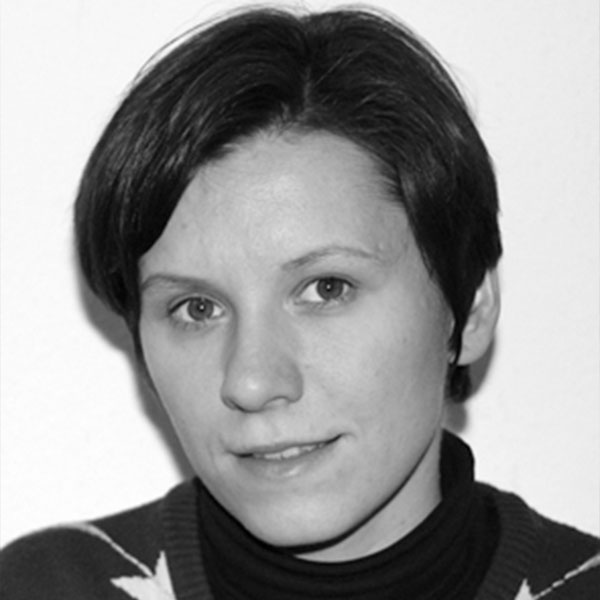
an artist who helps migrants through art and activism
Marina Naprushkina is an artist, feminist and activist from Minsk. In 2000 she moved to Germany to study at the Academy of Fine Arts and has been living there ever since. Naprushkina works with videos, performances, drawings, installations, and texts. Through her work, she tries to break out of the traditional gallery "white cube" of a simple, bright room with paintings hanging on the walls, with which the viewer has no opportunity to interact. According to the artist, the traditional approach can make art inaccessible to viewers. That’s why Marina considers it important to cover different disciplines and solutions in her exhibitions.

Marina Naprushkina - installations "I can't handle it" and "I want a woman president" / poster and slogans on the canvas / 2020-2021 / Demokratie heute — Probleme der Repräsentation, KINDL — Zentrum für Zeitgenössische Kunst
In 2013, Marina Naprushkina founded Neue Nachbarschaft/Moabit (German for “New Neighborhood”) — a voluntary initiative in which activists create a social and artistic platform for exchange, learning and interaction with people from all over the world who come to Berlin. The initiative has grown to be one of the largest in Berlin and has created a strong community of people both with and without migrant and refugee experience.

Елена КабиElena Kabischer-Jakerson
a graphic artist, painter and sculptor from Viciebsk
In many sources, information about Elena Kabischer-Jakerson begins with her studies at the Yudel Pan art school — the private school of the famous Viciebsk painter and teacher. She was one of few girls who studied there, since most of the students were men from the Jewish community. Looking at the list of famous graduates, among Marc Chagall, El Lissitzky or Lev Leitman, we won’t find many female names. But Elena Kabischer-Yakerson seems to have been a special student who was deeply influenced by the personality of her first teacher, Yudel Pan.
After studying at Pan's private school, Elena enrolled at the Viciebsk Art School, which was created by Marc Chagall. There she continued to attend painting lessons given by her first teacher and completed assignments in Chagall's "free workshop". With the arrival of Kazimir Malevich, she, along with other teachers and students, joined the UNOVIS avant-garde group (meaning: The Champions of the New Art or “Utverditeli Novogo Iskusstva” in Russian). However, Elena later said that Malevich's “prophecies” did not convince her, and her enthusiasm for the new art was rather superficial.
Yudel Pen — "Portrait of Elena Kabischer-Yakerson"
In 1921, Kabischer married David Jakerson — already a well-known Viciebsk sculptor, graphic artist and Art School teacher. After marriage, the couple moved to Moscow, where the artist entered VKHUTEMAS (meaning: Higher Art and Technical Studios). Studying here also had a huge impact on Elena. In Moscow, she studied with Robert Falk, thanks to whom she adopted the cezanne understanding of form and a refined perception of color. In Falk’s workshop she chose still life and landscape as her main genres for several years. On many of her paintings done in the 1920s and early 1930s, she often painted Viciebsk and Jewish places.
In the 1930s, Elena started moving away from the "Jewish theme", but with the outbreak of war, she decided to come back to it. Under the influence of the Jewish population being wiped out, both Elena and David’s works had images reminiscent of Jewish folk art. In particular, Kabischer created a series of plaster figures and sculptural compositions using Jewish zoomorphic motifs.
In 1949, the artist experienced a severe shock after the death of her husband. She then abandoned painting and participated in artistic life. In the 1980s, she gave Viciebsk a large collection of her artworks. Some of them had been waiting for restoration for a long time. Last year, a collection of 11 paintings was finally restored. Thin, almost translucent canvases of the artist are now in Elena's hometown - Viciebsk.
The artist died in Moscow on November 19, 1990.

Galina Vasilyeva
the successor of the Viciebsk avant-garde
Galina Vasilyeva is an artist, curator, art historian and teacher who lives and works in Viciebsk. She’s engaged in conceptual art and abstract painting. As a creed in art, she defines the following principles: minimalism of color and form, search for the greatest clarity, harmony and stringency of selection. Galina's artwork is dominated by simple geometric forms, neat constructiveness, static and strict compositional solutions.

Galina Vasilyeva - "Victory over the Sun" / acrylic, canvas / 120x120 cm
Talking about her work, Vasilyeva says that she discovered constructive direction in art back in 1991, when colorful expression was replaced by geometric abstraction. In 1993, the artist had the first exhibition of constructive art in Viciebsk, and then the second one just two years later called “Concrete-Constructive Art” (English version of the name could be “Specifically Constructive Art”). More than 40 artworks were presented at the exhibition. The art of Galina Vasilyeva is not about reality, it’s the opposite.
Galina Vasilyeva — Caryatids / performance / 2022
Galina’s artwork is presented in museums, private collections and galleries in Latvia, Germany, England, Israel, Poland, the US, Lithuania, Belarus, and Russia.

Zinaida Astapovich-Bocharova
an artist who never became "soviet"
Zinaida Astapovich was often written about in comparison with her brother Arkady Astapovich, also a talented artist, almost the same age as Zinaida. Sometimes she was just mentioned as his sister. But at the same time, both of them were discovered relatively recently. The creative heritage of Arkady was discovered only in the 1960s, Zinaida’s even later. The lyrical works of artists weren’t similar to the “trends” dictated by their time, and the conscious desire to be autonomous and apolitical in Soviet times became a serious obstacle to fame and success in career. Nevertheless, Zinaida managed to leave us a rich cultural heritage.

Zinaida Astapovich-Bocharova - "Evening Vitebsk"
Zinaida and her brother were born in Minsk. Together they graduated from the same school in Hrodna, and then, after the death of their father, siblings went to St. Petersburg to study at the school of the Society for the Encouragement of the Arts, which at that time was led by Nicholas Roerich. Zinaida proudly recalled that in St. Petersburg she was immediately accepted into the figure class, bypassing the main one because of the work. The siblings were taught mainly by neoclassical scholars with a strong academic reputation, but Ivan Bilibin, the famous Russian modernist, who led a graphic workshop, had the greatest influence on both. It was because of him, that Zinaida took an interest in traditions and fairy tales, which she had been doing after.

Zinaida Astapovich-Bocharova - "Asters"
After graduating from the Society for the Encouragement of the Arts, Zinaida was an art teacher at a school by the Obukhov plant, but hunger and cold weather in what was back then Petrograd forced her to go back to her relatives in Novoselki, that’s near Minsk. The artist lived there for three years. In 1923, Zinaida returned to St. Petersburg, where she entered the Petrograd Art-Industrial College, and began a period of first achievements in her work. Zinaida revealed her talent as a portrait painter and her first successes in illustration appeared, and now each genre and material is easy for her. The artist is beginning to develop ties with private publishers, which brings her to designing book covers for fairy tales in poetry by Yevgeny Schwartz and Wolf Erlich. The magazine "Leningrad", where Schwartz works, publishes her watercolor "Demonstration", and the young Samuil Marshak persuades the artist to write and illustrate fairy tales. Soon the successful period ends. The magazine "Leningrad" is closed, and the books with the covers of Zinaida are never seen by the world.

Zinaida Astapovich-Bocharova - "Beyond"
Later orders stimulated Zinaida's talent, but they were rare and small. In 1927, the artist received an order for a series of drawings of rural types of Belarus, peasant clothes, costumes from Vatslav Lastovsky, the director of the Belarusian State Museum (the modern National Historical Museum). Numerous sketches for this series have been preserved, and the miniatures have not lost their artistic or historical value to this day.
The active period of the artist's work ended with the birth of her daughter. Zinaida began teaching graphics at the Veterinary Institute, where her husband was a graduate student, and then from the 1930s she began to paint. However, unfortunately, the works of this period were partially lost during the evacuation.
Documentary film about the artist
Zinaida really finds herself already upon arrival in Viciebsk, where she lived with her daughter's family for the last 30 years of her life. The places of the artist's daily walks in Viciebsk became a large series of gouache miniatures. In terms of quantity and variety, the only thing in Zinaida's work that could compete with the miniatures were the illustrations for fairy tales, which the artist has been doing her whole life, often drawing just for herself. During all this time, the brother Arkady highly appreciated her work and was telling her to do more in order to collect paintings for the exhibition. Today Zinaida's talent is obvious not only to her brother, but also to critics and art historians. The joint exhibition of the Astapovich siblings in Minsk and Viciebsk in 1989-1990 confirmed this.
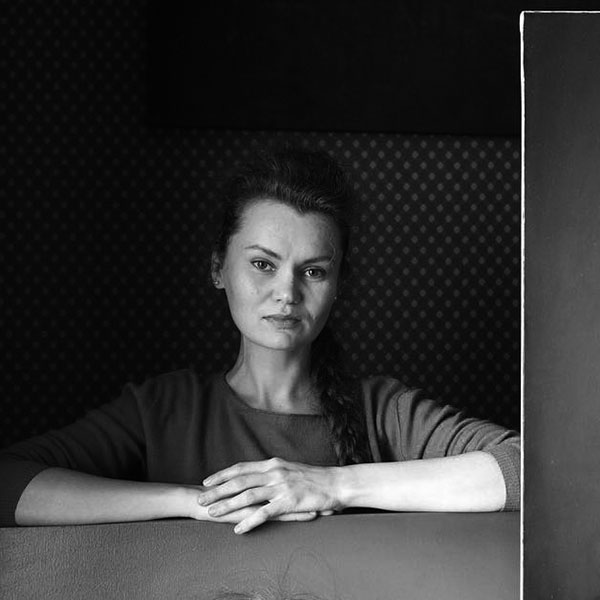
an artist, who’s works have been published in TIME
The canvases of the contemporary artist Victoria Savenkova could’ve been already seen by Belarusian art lovers both at the “Art-Minsk” contemporary art festivals and at the “Portrait of Time” exhibition at the “Art-Belarus” Gallery. Mentioning the exhibition in one of the texts of the project “Belarusian Art: From maljavanka to NFT”, we also showed her artwork. Then we drew parallels between her work "Planet" and "Eva” by Chaïm Soutine. Here we’ll talk a little more about her paintings.

Victoria Savenkova - "4 AM" / canvas, oil / 120×100 cm
The creative path of the Belarusian artist went through an art studio, a school, a college and then an academy. According to her, which Victoria publishes on her website, painting is the best language for her, the best way to express her experience and her feelings. But Victoria wasn’t always engaged in realistic painting. She worked as a production designer at the national film studio "Belarusfilm" and even as a tattoo artist. In 2014, Victoria realised that she needs to express her creativity in a different way. Her artwork can also be seen outside of Belarus. The artist and her work have repeatedly become a finalist or winner of prestigious foreign awards. For example, Savenkova's portrait received a jury prize from the Barcelona Academy of Arts in the nomination "Self-Portrait in Quarantine".

Victoria Savenkova - portrait of Jacinda Ardern, Prime Minister of New Zealand for TIME / 2019
Her work has also been featured in one of the most widely read magasines in the world, TIME. For the 2019 Man of the Year issue, Victoria created a portrait of Jacinda Ardern, Prime Minister of New Zealand.

Jadwiga Rozdziałowska
an artist of Polish origin, who became Belarusian after the war
This artist is originally from Poland, but she gave most of her work to Belarus. Jadwiga Rozdziałowska was born in Biała Podlaska, where she spent her childhood and youth. During World War II, Jadwiga had to flee, so she moved to Belarus and first lived in Baranavichy, then in Maladzyechna. She became a member of the Union of Artists of the BSSR in 1948. Maladzyechna became special for her: it was here that Jadwiga played a huge role in the formation of the local artistic circle. In the second half of the 1950s, she founded a folk studio of fine and decorative arts together with Konstantin Khoroshevich, where she taught composition. One might say that the creator of the Maladzyechna art studio brought up local young artists, who then went into professional art.
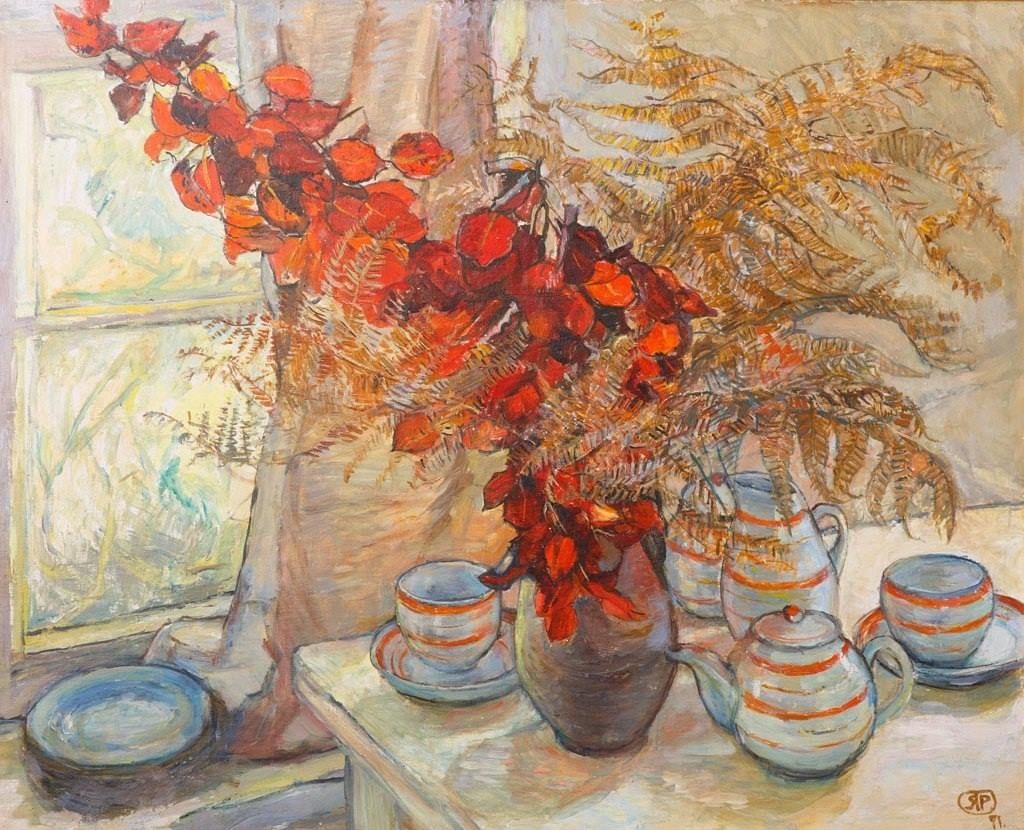
Jadwiga Rozdzialowska - "Still Life" / 1971
Last year, the Minsk Regional Local Lore Museum acquired photographs and digital copies of 102 works by the artist, but alas, they are not dated and their names and sizes are unknown. Therefore, researchers have a lot of work to do in order to establish these parameters. And in general, there is not much information about Jadwiga Rozdziałowska. Most of it is in the archives of Poland, and some information contradicts the information in the Russian language. For example, when reading about the artist in Russian, even in the accompanying article of the National Art Museum for a recent exhibition, it is written that Rozdziałowska graduated from the Academy of Arts in Warsaw. However, Polish sources indicate that Rozdziałowska never graduated from the academy. The reason was simple — lack of money.

an artist whose complex installations impress others
For many years, the art of Anna Skoromnaya has been going hand in hand with constant experiments. She works with new multimedia tools and creates her own approaches to work. In recent years, while enhancing her own artistic language through various projects, Anna has developed a combination of the two types of tools she uses to create her art —innovative digital media (holograms, videos, and dynamic images created with various programs and computers) and deliberately infected rust or physical/chemical corrosive materials.


Anna Skoromnaya — "POPCORN MACHINE - OUT OF ORDER" part of the "Kindergarten" series / installation / 2020 / a series of works on the theme of a lost childhood, combines videos created by the artist over the years. In them, she explores various aspects of child exploitation. Including how children are harassed in the workplace, turned into instruments of violence and death from pseudo-religious terrorism, and turned into child brides.
For example, in her first series of artworks called “S.O.S. CODE”, that was dedicated to how thought processes and lifestyle are transformed in modern society, Anna has found a new technique. She called it a "dynamic light box". To put it as simply as possible, it’s a "dynamic light box" where some figures move and constantly transform due to the optical illusion that is created by the changing position of the built-in light.
The main interest of the artist is the contradictions and paradoxes of modern society. In her second series of artworks called "Kindergarten", Anna intended to continue her study of society, which she started in "S.O.S. CODE". This time, the artist paid more attention to the ongoing exploitation of the most vulnerable and defenseless people in society — children.


Anna Skoromnaya — "Sweet Corner" part of the "Kindergarten" series / installation / 2021 / a series of works on the theme of a lost childhood, combines videos created by the artist over the years. In them, she explores various aspects of child exploitation. Including how children are harassed in the workplace, turned into instruments of violence and death from pseudo-religious terrorism, and turned into child brides.
Artist Anna Skoromnaya was born in Minsk. She now lives and works in Italy, where she teaches painting and drawing at the Academy of Arts.

Alena Kish
an artist who painted incredible animals
The Belarusian artist of naive art is probably known by many people. Recently, modern designers have been increasingly turning to her “maljavanky” (meaning: paintings) to make bright accessories, popularising the artist’s work. Kish’s work is known and recognisable, but it wasn’t always like that.
For the first time, the paintings of Alena Kish were shown to the public after the death of the artist. In 1978, Alena's maljavanky were presented at the First republican exhibition of Folk Painted Carpets in the halls of the Minsk Palace of Arts. Actually, even the discovery of Kish as an artist only occurred after her death. The collection of carpets was brought together by another artist — Vladimir Basalyga. He saw Alena’s carpets when he was a child and he couldn’t forget them since then.

The artist traveled around the villages and took Alena's works from literally sheds, attics and barns. After the exhibition at the Palace of Arts researchers and artists from the USSR turned their attention to the work of folk craftsmen and craftswomen, and many of them became interested in Kish’s painted carpets. Later, Vladimir Basalyga decided to transfer his collection of maljavanky to the museum. Kish's artwork was accepted by the Museum of local lore in Zaslavl. The artist's works are still kept in their archives.
Little is known about Alena Fish herself. She was born in a large peasant family, in Romanovo village, Slutsk region. In her village, Alena was considered “not from this world”. Perhaps that is why, as an adult, the artist moved from one village to another, where she would paint “dyvans” (meaning: carpets) for other peasants. Customers often paid Alena with food and shelter.

With the increasing popularity of maljavanky, they began to be produced in factories. Such carpets differed from hand-painted ones: they were brighter and more colourful, did not crumble or fade. That’s why the works of the artist weren’t needed anymore, and the existing ones were brought to a barn or an attic. Kish’s artwork was unwanted and in the last years of her life, the artist had been starving. In 1949 she passed away — out of lack of demand and poverty, Kish threw herself into the river.
A documentary about Alena Kish.
Now the name of Alena Kish is included in the World Encyclopedia of Naive Art.
Падобныя матэрыялы
FOLLOW US
INSTAGRAM TELEGRAM TIKTOK FACEBOOK YOUTUBE
© Chrysalis Mag, 2018-2025
Reprinting of materials or fragments of materials
is allowed only with the written permission

